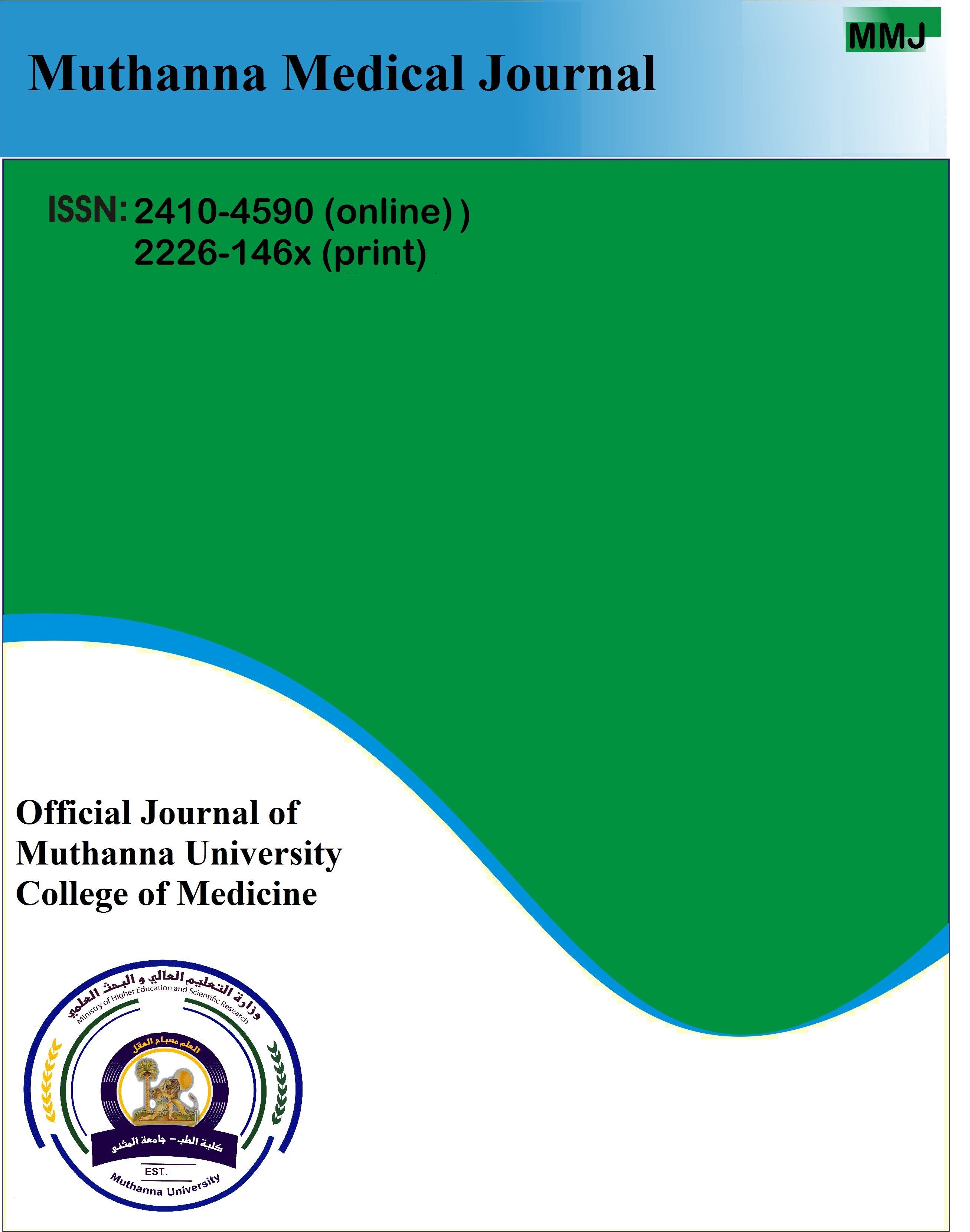Muthanna Medical Journal
Volume 9, Issue 2, 2022 Page 91-104
http://dx.doi.org/10.52113/1/1/2022-91-104
Yasir Nihad Noori ¹*, Ehab Ibrahim Rady ², Dalia Farouq Najeeb ¹
Correspondence author: yaserlord@yahoo.com
¹ medical city, Baghdad
² Diyala health directorate, Diyala
Received 21 July 2022, Accepted 03 September 2022, Available online 25 September 2022.
Copyright © 2022 YN. This is article distributed under the terms of the Creative Commons Attribution License http://creativecommons.org/licenses/by/4.0), which permits unrestricted use, distribution, and reproduction in any medium, provided the original work is properly cited.
Abstract
Cholestatic jaundice most probably occurs due to a pathological condition moreover difficult diagnostic problem. The aim of the study: to determine the etiology of cholestatic jaundice in infancy and to evaluate if clinical events and different investigations could assist in the differential diagnosis of intra and extra-hepatic cholestasis. In this hospital-based study analysis of 35 cases diagnosed with cholestatic jaundice aged 3 weeks up to 12 months from two centers carried out from January 2018 to July 2018. Clinical, biochemical, radiological, histopathological results were recorded. Results: Regarding the 35 patients were (54.3% males, 45.7% females), the mean age at presentation was 117.9 ± 86.4 days and mean age at onset of jaundice was 34 ± 59.11 days, All patients were presented with jaundice (100%) and (45.7%) of them were presented with clay color stool, (77.1%) of patients presented with hepatomegaly followed by ( 54.3%) with splenomegaly, regarding the etiology of cholestasis, Extrahepatic biliary atresia was the commonest cause (22.9%) and the most common cause of intrahepatic etiology was Cytomegalovirus (14.3%). While Idiopathic neonatal hepatitis, Alagille syndrome were (8.6%) for each. Progressive familial intrahepatic cholestasis, Galactosemia, Tyrosinemia, and septicemia were (5.7%) for each. Congenital rubella and congenital hypothyroidism and Fatty acid oxidation disorder were (2.9%) for each. Undiagnosed patients represented (14.3%) of all cases. Inconclusion, the etiologies of infantile cholestatic jaundice are numerous. and was no single laboratory investigation that could precisely make a definite diagnosis. Extrahepatic biliary atresia was the most common cause of cholestasis in this study. Jaundice, hepatomegaly, and pale stools were the common clinical features on presentation.
Keywords: Clinical Laboratory Evaluation, Cholestatic Jaundice, Iraqi Infants